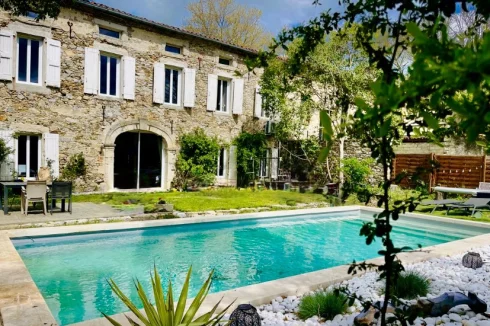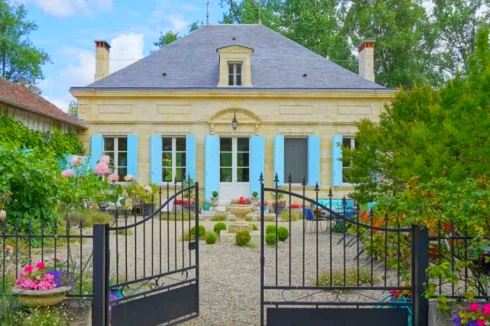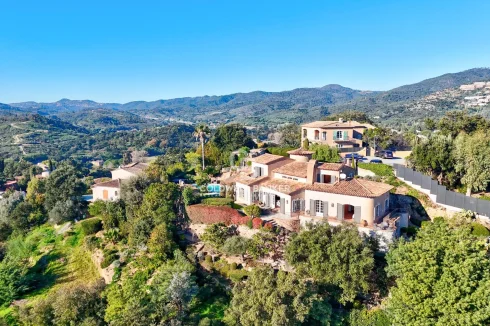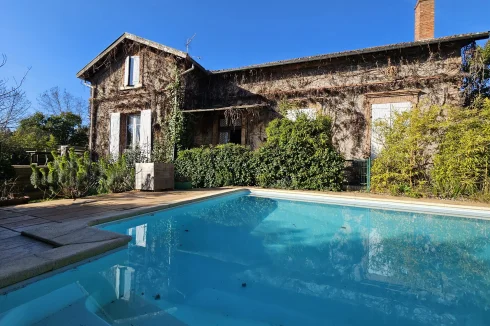French Planning System Reforms for 2012
Wednesday 04 January 2012
A number of changes to planning regulations and taxes are being introduced, which it is hoped will simplify the whole process.
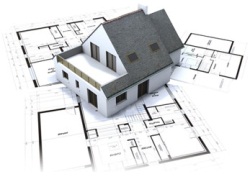
The main changes are:
• Greater freedom to build without the
need to submit a planning application;
• Simplification of the calculation of
'habitable space';
• Rationalisation of the system of
planning taxes.
Each of these changes is considered below.
Reform of the Planning Application
Home owners will be granted the right to construct an extension of up to 40m² without the need to submit a planning application (permis de construire).
However, this is far from a universal or revolutionary change.
Under current regulations the maximum surface area that can be constructed without a planning application is 20m², although the submission of a works declaration (Déclaration préalable de travaux) is always necessary.
So the proposed change will simply mean swapping the use of one application form over another, for extensions up to the new threshold.
The change also only applies to extensions to existing buildings; new and separate construction, such as a detached garage or workshop, will continue to require a planning application.
The completion and submission of a works declaration is by no means a simple process, as the form itself is rather forbidding, and a plan of the proposed works is still required.
Although the process is quicker, neither is approval of a works application automatic, as reasons for refusal may include:
- A lack of suitable infrastructure;
- Non-respect of distances between properties;
- Architectural or landscape reasons;
- Limits on the plot ratio.
In short, the development will still have to comply with local planning and building regulations.
Moreover, if the property is not within an area designated for construction by a local plan (PLU or POS) then it will still be necessary to submit a planning applicatIon.
This means that home owners in most rural areas will continue to be governed by the existing rules as these councils rarely have in place a local plan, other than a Carte Communale. A CC does little more than designate where development can take place.
If the extension increases the floor area of an existing residential property to over 170m² then a planning application will still need to be submitted and the use of an architect will continue be necessary.
Although it is not entirely clear, it also seems that if the property already exceeds this threshold then existing rules apply, including mandatory use of an architect.
Despite the limitations of the change, it has attracted a great deal of criticism, with the Conseil national de l'ordre des architects leading the charge. They have stated that 'to increase densities without controlling it qualitatively cannot but amplify the degradation of the sites and landscapes, generate new conflicts between neighbours and increase planning disputes.'
The new regulation is effective from 1st January 2012 for applications submitted from this date.
Calculation of Habitable Space
Alongside the revision of the permis de construire the government has decided to simplify the calculation of habitable space.
Currently, there is the usual alphabet soup of acronyms to navigate around, with the terms 'SHOB' (Surface Hors Oeuvre Brute) and 'SHON' (Surface Hors Oeuvre Nette) used to define the different surface areas of a property.
The definition of these areas is complex and not easily accessible to the laymen, although both are needed on planning documents.
In future there will be a single, unified definition, called the 'surface de plancher'.
The new space definition comprises all the internal floor area with a height of at least 1.80m, although we await the publication of the detailed regulations for a full explanation.
The aim of this change is not only to aid comprehension, but to ensure that those who are constructing high energy efficient properties with walls of greater thickness are not penalised.
It is estimated the change will permit an increase of around 10% in the density of buildings that will be permitted on building plots.
The new definition will apply for all new planning applications and works declarations made from 1st March 2012.
Rationalisation of Planning Taxes.
The current regime of planning taxes is to be rationalised into a single tax.
There are currently up to six planning taxes that may be payable in connection with a successful planning application.
Most of these taxes d’urbanisme are to be amalgamated into a single taxe d’aménagement.
The objectives of the change are to make the whole system more comprehensible and to reduce administration costs.
Local authorities will have a large degree of discretion in determing the rate of this tax as well as certain exemptions and reductions.
Accordingly, the tax rate can range from 1% to 5%, depending on local determination, although for the Ile de France the rate cannot exceed 1%.
The figure on which this percentage is based is €660 in the regions and €748 in the Ile de France. It is then multiplied by the surface area of the works.
So the calculation for the tax is:
Surface Area x Value x Local Rate
Example:
150m² X €660 X 2.5% = €2475
The government have also given local councils discretionary power to impose a tax on the under-development of land.
Under this regulation local authorities will be entitled to stipulate in their local plans a minimum level of density for developments. If this threshold is not achieved by developers and builders then the planning authority will have the power to impose a 'low density' tax, called la versement pour sous-densité - VSD
The government hopes that the new tax will increase the provision of new homes and slow down urban sprawl.
Thank you for showing an interest in our News section.
Our News section is no longer being published although our catalogue of articles remains in place.
If you found our News useful, please have a look at France Insider, our subscription based News service with in-depth analysis, or our authoritative Guides to France.
If you require advice and assistance with the purchase of French property and moving to France, then take a look at the France Insider Property Clinic.
